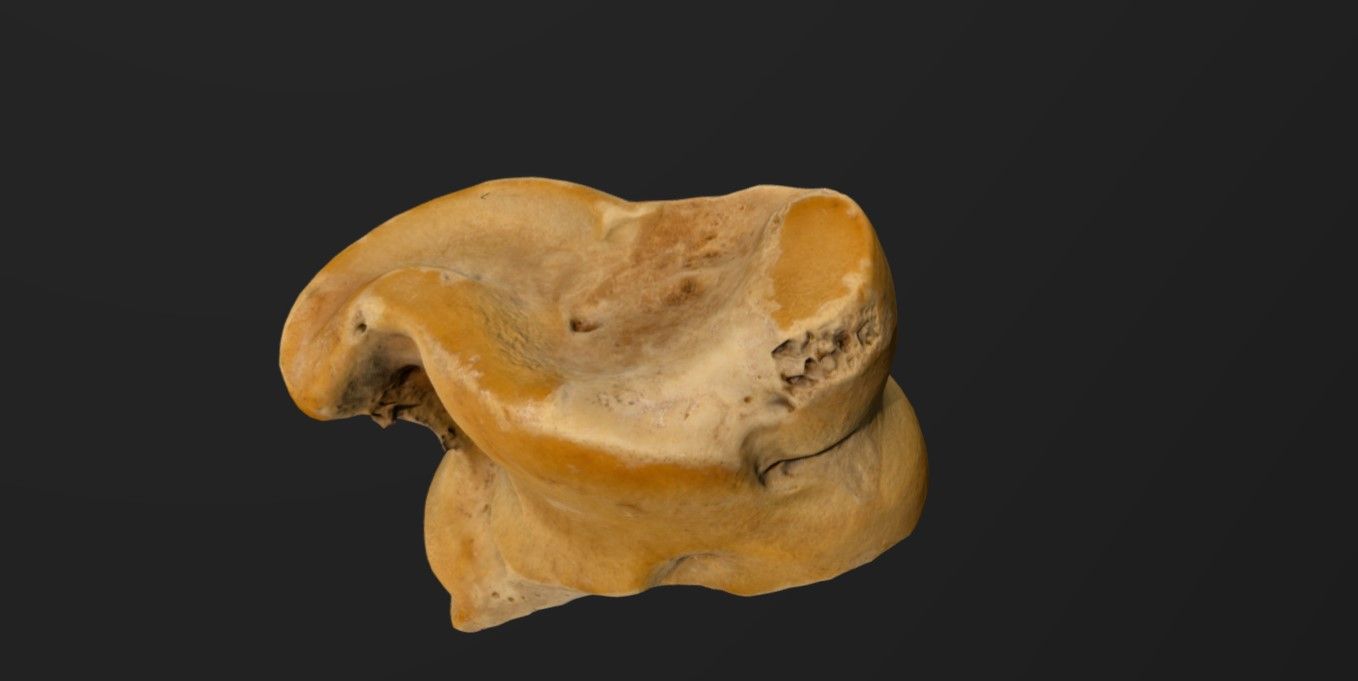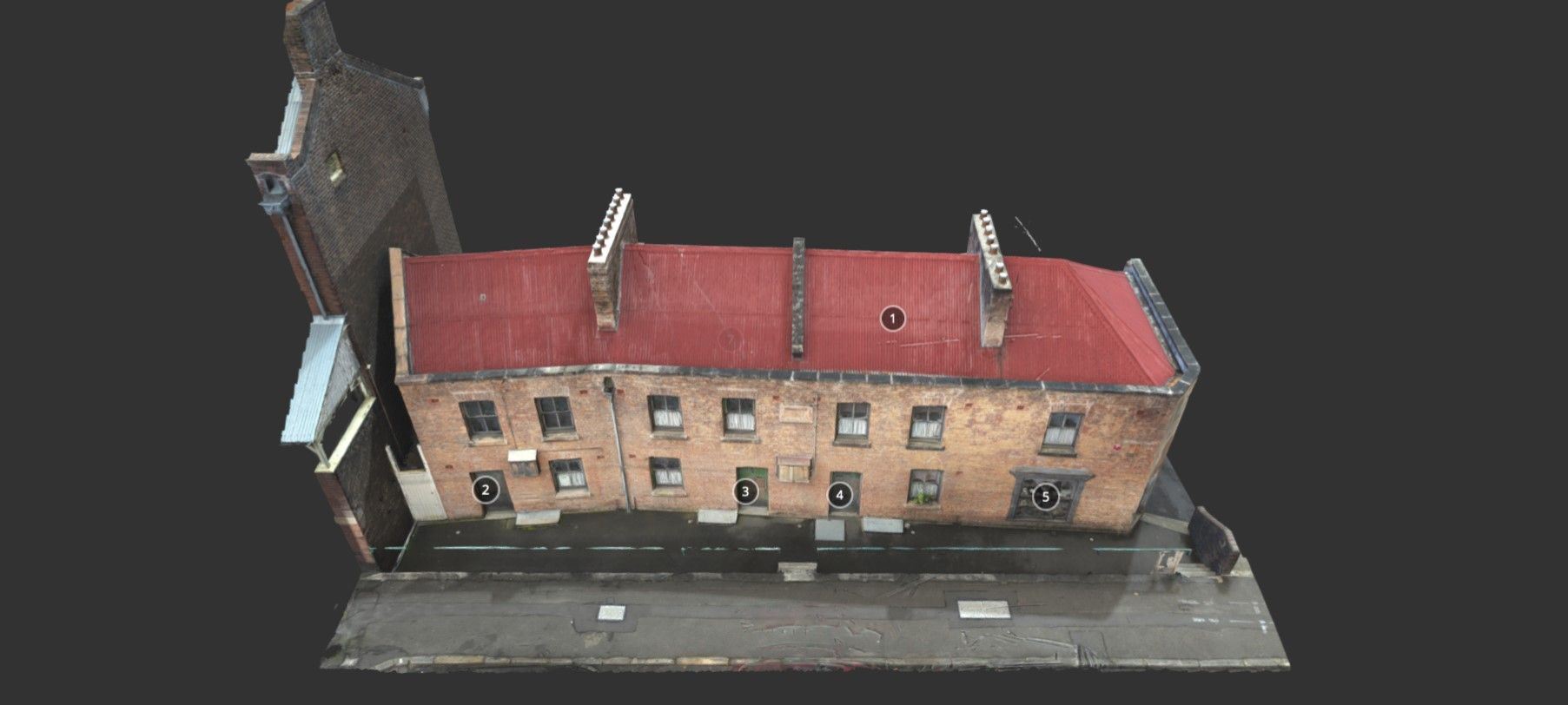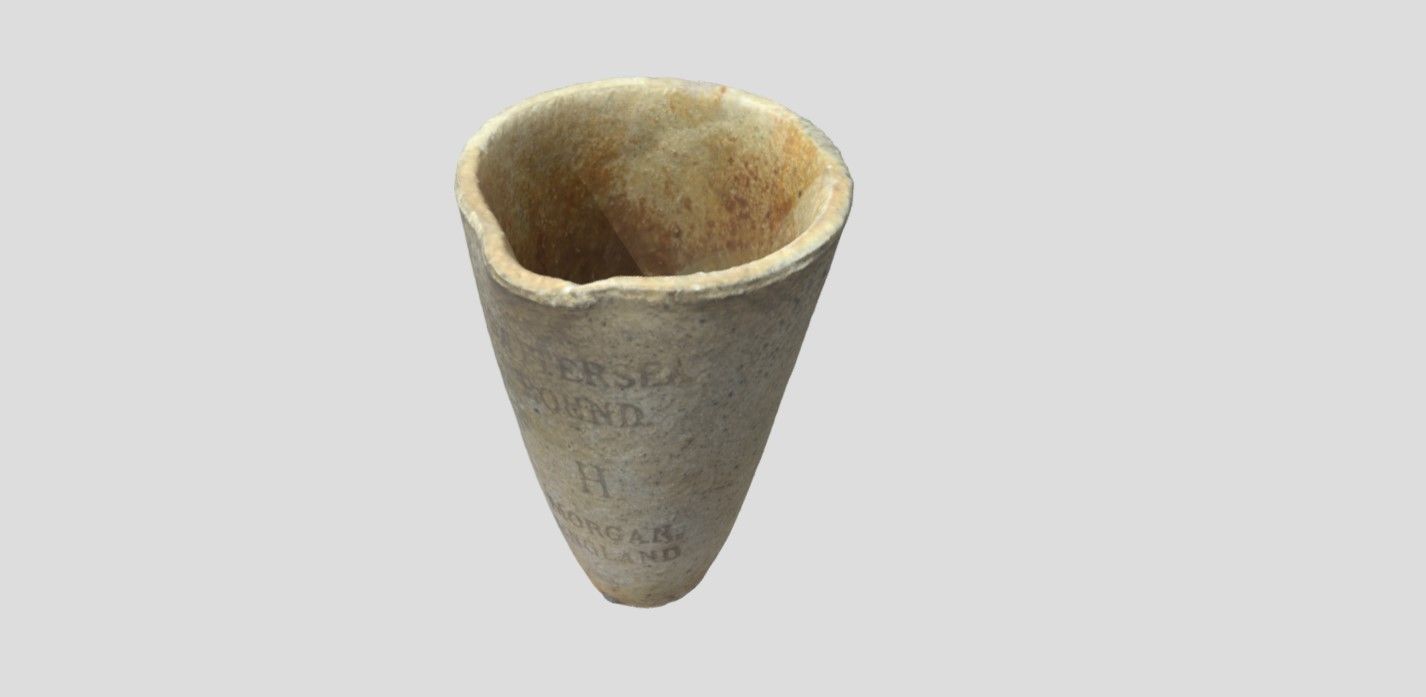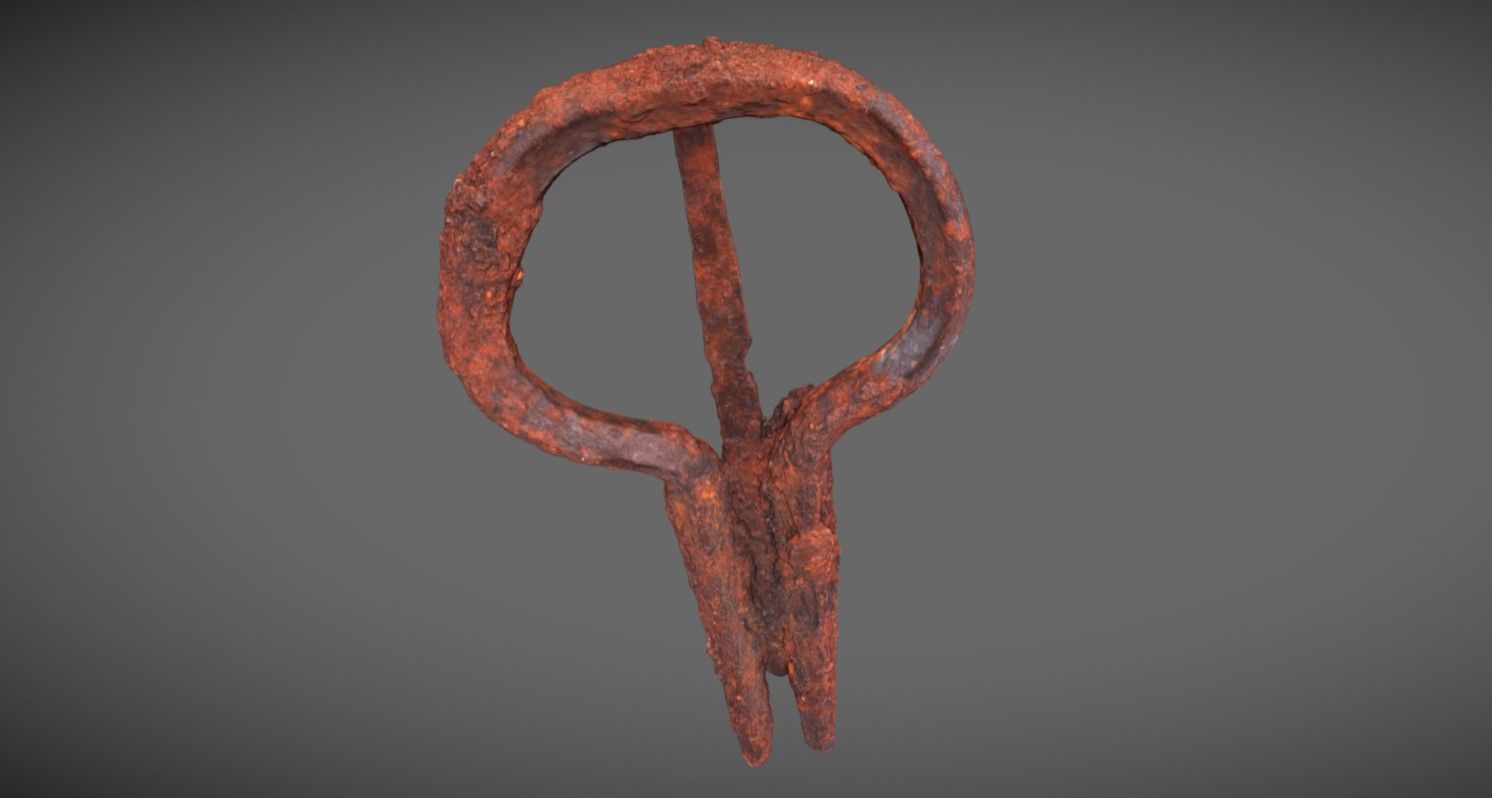Digging up the past
Analysing the artefact
To explore the object click and drag to change the angle or right click to drag the image across. Click to change the focus.
What is this?
Question: Do you think this is a human or animal skeleton?
It is an animal skeleton that was found buried in the grounds of First Government House in Sydney.
Question: Can you tell from looking at it what species it might have been? Are there any clues?
Try looking at the skull and the teeth – from this we might be able to see if it is a meat eater (carnivore) or not. Where could you find out more information about animal skulls and teeth?
Question: When do you think it was buried? How might this information help us to work out what species it was?
We know that First Government House stood from 1788 to around 1845-1846 when it was demolished. This skeleton, archaeologists believe, dates from around 1820. What this means is that it could be either a native species (an animal from New South Wales before the First Fleet) or one that was imported from another country (non-native).
We know that animals were brought over to Sydney on the First and subsequent Fleets. Can you find out more information about which animals were on board? Does that help to solve the mystery, or at least to narrow it down a bit?
Question: Why did the animal die and what does that tell us about it?
Have a look at the skeleton. Can you see any evidence that it was killed (butchered) for meat?
No! This animal was not killed for food and the skeleton does not show any evidence of injuries. So, this is an animal that died from illness or natural causes (old age).
Question: How does evidence of its burial tell us more about it?
Look at the skeleton. It is almost complete and has not been simply thrown into the ground. This tells us something.
It was found buried in a kind of coffin. This appears to have been an animal that a person cared for. So, what kind of animal could it have been?
It was found buried in a kind of coffin. This appears to have been an animal that a person cared for. So, what kind of animal could it have been?
Once you have completed your investigation and discussion, click here for answers
It is a species of dog. But how can we tell if this was a pet dog or a native dingo?
See this link for more information about dingoes: Dingo - The Australian Museum
Let us revisit the evidence! Is it likely that a wild dingo would have been buried this carefully? No!
It was more likely a domestic dog, used for working, hunting or as a pet.
We know that hunting and working dogs like greyhounds were brought over on the First Fleet. Does this look like a greyhound skeleton?
No, archaeologists think it was a breed of dog like a Labrador, although we do not know exactly.
Given how carefully the dog was buried, archaeologists believe it could have been someone’s pet dog.
You can find out more about the dog here: 3D scanning the archaeological dog skeleton
And you can see the dog’s skeleton on display under a glass panel in the foyer of the Museum of Sydney.
Did you know?
Ancient Egyptian people used to mummify animals as well as humans after they died!
Next Steps
Have a look at the images and information about First Government House on the website.
Pick one of these pictures of First Government House
- Research: What year was it and who was the governor living at First Government House at the time?
- Creative Task: Imagine you lived or worked at First Government House at that time and had a pet dog. What was your life like living at First Government House and working in the colony. For example, a female convict now working as a housemaid, or a boy convict working in the gardens.
- Write a journal entry as if you were the person who owned this dog.
- Try to answer these questions in your writing:
- What was the dog’s name?
- What kind of dog was it?
- What colour was it?
- What was your favourite game to play together?
- What did you see and who did you meet when you took the dog for a walk in Sydney?
- Try to answer these questions in your writing:
Explore more objects
Browse all
Resource
Toys in the past
Let your Stage 1 students explore this 3D mystery object to find out more about games played by children and adults in the past

Resource
Susannah Place
Take a closer look at this 3D scan of Susannah Place, as shown in our Virtual Excursion ‘Solve It Using Sources’

Resource
The Gold Rush
How does this object relate to the Gold Rush and, if you struck lucky, what could a gold sovereign buy you in the 1850s?

Resource
Convict life
What can this object from the 1800s tell us about convict life at Hyde Park Barracks?